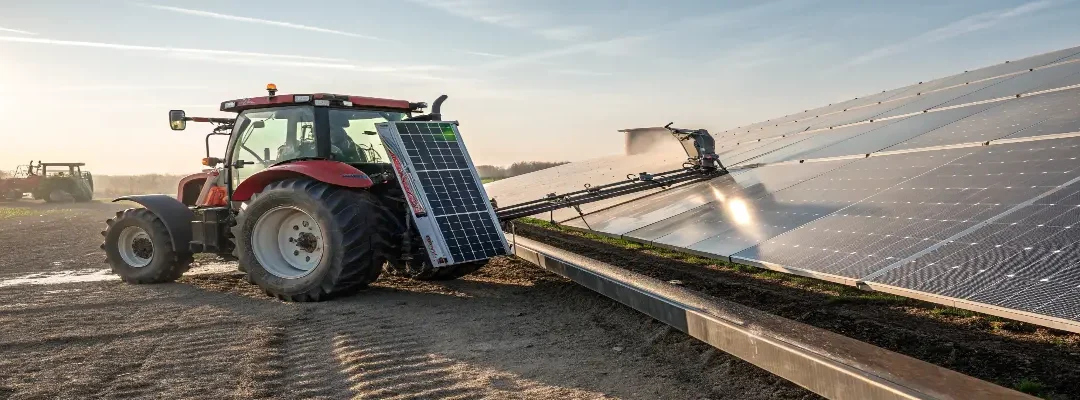Large solar farms often span hundreds of acres, with thousands of panels lined up in rows. Keeping them dust-free is a challenge. While robotic cleaners are popular, many utility-scale operators in rural regions rely on tractor-mounted solar panel cleaning systems.
But are these tractors really cost-effective? Let’s explore how they work, the savings they bring, and whether they’re worth the investment.
What Are Solar Panel Cleaning Tractors?
Solar panel cleaning tractors are modified agricultural tractors fitted with:
- Long rotating brushes (up to 6–8 meters wide)
- Hydraulic arms for easy reach
- Water-assisted or waterless cleaning options
They move along solar panel rows, cleaning hundreds of panels in a single run.
Why Tractors for Solar Cleaning?
- Designed for Scale – Clean large solar farms (10 MW–500 MW) quickly.
- Affordable Automation – Lower upfront cost compared to fully robotic systems.
- Rural Compatibility – Easy availability of tractors in solar-rich states like Rajasthan, Gujarat, and Madhya Pradesh.
Cost Savings with Cleaning Tractors
1. Reduced Labor Expenses
- Manual cleaning of a 50 MW farm may need 200+ workers.
- A single tractor system can replace dozens of workers.
- Annual labor savings = ₹30–50 lakh depending on site size.
2. Lower Water Usage
- Modern tractor cleaners use controlled water sprays or waterless brushes.
- Saves 20–40% water compared to tanker-based cleaning.
3. Faster Cleaning Cycles
- Cleans thousands of panels in hours, not days.
- Fewer cleaning delays → higher energy generation.
4. ROI on Investment
- Tractor cleaning systems cost ₹15–30 lakh.
- Payback in 1.5–2 years through energy gains and O&M savings.
Case Example: 25 MW Solar Farm in Gujarat
- Manual Cleaning: ₹70 lakh/year (labor + water tankers).
- Tractor Cleaning System: ₹25 lakh upfront + ₹15 lakh/year O&M.
- Annual Savings: ₹40 lakh.
- Payback Period: ~1.8 years.
- Additional Benefit: 10% higher output (~₹2.5 crore/year).
This shows tractors deliver quick ROI + long-term savings.
Limitations of Tractor Cleaning
- Not suitable for rooftop or compact layouts.
- Requires wide spacing between panel rows.
- Initial customization and setup costs.
- Higher wear-and-tear compared to static robotic systems.
Future Outlook
- Hybrid models combining tractor-mounted brushes with AI-based tracking.
- More waterless tractor attachments to save resources.
- Leasing models where O&M firms provide tractors on service contracts, reducing CAPEX burden for solar farm owners.

